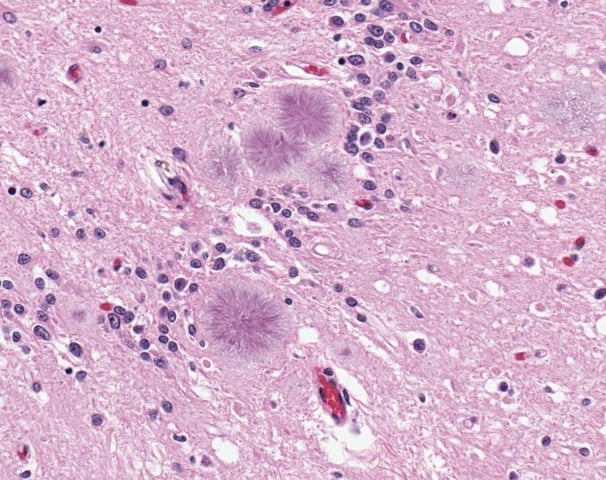
Proteins are vital for life and perform a wide range of essential biochemical tasks in all living organisms. Cells of these organisms are hence under a constant pressure to maintain an optimal protein environment, assuring all proteins are correctly folded and functional.
Unfolded proteins are sticky and tend to form so-called protein aggregates with either themselves, other proteins or when binding to exposed surfaces within the cell. Aggregation mechanisms depend on both primary amino acid sequence of the protein and external environment such as pH, salt and temperature. Most protein aggregates can be reversed or degraded by the cell protein quality system (molecular chaperones or proteases).
However, sometimes the control mechanisms fail and accumulated aggregates transform into amyloid plaques and other protein megastructures. This is the case in protein misfolding diseases, proteopathies, such as Alzheimer’s and Parkinson’s disease. Amyloids behave very differently to functional soluble protein, for example in regards to rigidity. Current trends within this field of research is to study the kinetic buildup of such megastructures and consequently also searching for therapeutic agents that prevent buildup and hence disease. Protein misfolding diseases are a huge threat to the increasing ageing population, with such diseases affecting more than 10% of all people over the age of 65.
Learn about how aggregation of protein Tau in tauopathies, a sub-set of neurodegenerative diseases, can be studied with QCM-D.
Learn best practices and step-by-step methods for accurate QCM-D coating thickness measurement on QSense sensors using QSense Omni.
Compared to QCM, QCM-D measures an additional parameter, and provides more information about the system under study.
Discover how QCM-D analysis reveals real-time etching dynamics, helping optimize cleaning processes and protect surfaces from unwanted damage.
Discover how QSense QCM-D helps tackle fouling challenges across industries
Discover how QCM-D enables real-time, label-free analysis of supported lipid membrane formation, structure, and dynamics for advanced research
Learn how QSense QCM-D analysis can reveal membrane fouling dynamics and optimize cleaning strategies for more efficient water treatment
Learn how QSense QCM-D helps detect and prevent surface-induced instabilities in biologics. Join our webinar for insights and practical examples.
Learn about the top QSense sensors for analyzing biopharmaceutical drug-surface interactions in the context of IV bags.
Learn about QCM-D, Quartz Crystal Microbalance with Dissipation monitoring - an analytical tool for surface interaction studies at the nanoscale.
Explore QSense QCM-D sensors to optimize cleaning efficiency with real-time insights, enhancing formulations and protocols across various conditions.
Learn how how run small volume measurements with QSense Omni
